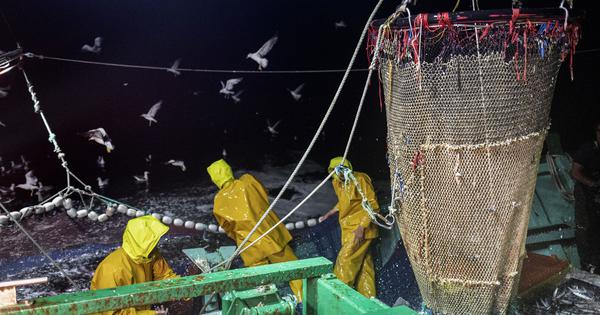The orange roughy fishery reflects the ongoing conflict between economic interests and environmental sustainability.
In New Zealand, the ongoing debate regarding the future of orange roughy fisheries highlights a complex relationship between humans and the deep sea. This fish, known for its longevity, can live up to 250 years and reaches maturity relatively slowly, typically in its late 20s to early 30s. Historically, orange roughy thrived undisturbed in the depths of the South Pacific Ocean until the late 1970s when deep-sea trawling began. Since then, their numbers have significantly declined, raising concerns about sustainability and the ecological impacts of fishing practices.
Bottom trawling, the primary method for harvesting orange roughy, is notorious for its destructive effects on seabed ecosystems. This fishing technique not only results in the capture of the target species but also generates substantial bycatch, which includes numerous non-target marine animals. A recent study by the New Zealand government reveals that orange roughy populations in some areas are now significantly below sustainable levels, with estimates indicating only 8% to 18% of their pre-fishing biomass remains. According to Earth Sciences New Zealand, a biomass level below 20% indicates overfishing, while levels below 10% suggest a stock collapse that may take decades or even centuries to recover.
Conservationists argue that the practice of bottom trawling inflicts severe damage on seabed habitats, particularly in the seamounts where orange roughy breed and feed. Trawl nets often destroy ancient corals and sponges, some of which can live for over 10,000 years. Karli Thomas from the Deep Sea Conservation Coalition emphasizes the significant impact a single trawl can have, stating that multiple passes can leave the seabed in ruins. Data shows that between 2007 and 2020, bottom trawling targeting orange roughy resulted in the capture of over 112 tonnes of coral, further underscoring the environmental cost of this fishing method.
Despite the environmental concerns, New Zealand continues to export most of its orange roughy catch, with 2024 exports valued at NZD 55 million ($31 million). The largest markets for these exports are the United States and China, where the fish is often served in middle-class households. Thomas points out that this consumption does not address food security issues, as orange roughy is not a staple for those facing hunger.
The Deep Sea Conservation Coalition has called on the New Zealand government to cease bottom trawling in seamounts, yet fishers, who account for 80% of the global orange roughy catch, remain resistant to ending their practices. Charles Heaphy from Sealord Group, a major player in the New Zealand fishing industry, argues for the necessity of maintaining access to these fisheries, emphasizing the economic contributions of deep-water fishing, which supports approximately 8,500 full-time jobs and adds NZD 2.7 billion ($1.6 billion) to the economy.
Historically, the fishing industry has seen a significant shift since the late 1960s when deep-sea fishing became more prevalent. The discovery of spawning orange roughy on the Chatham Rise in the late 1970s spurred a rush for this valuable species, leading to unsustainable catches and a dramatic decline in populations. The situation worsened over the years, resulting in the closure of several fishing grounds and a substantial reduction in allowable catches, particularly in critical spawning areas.
As the debate continues, the question of whether the orange roughy fishery can be deemed sustainable remains contentious, with the balance between economic interests and environmental health at the forefront of discussions.








